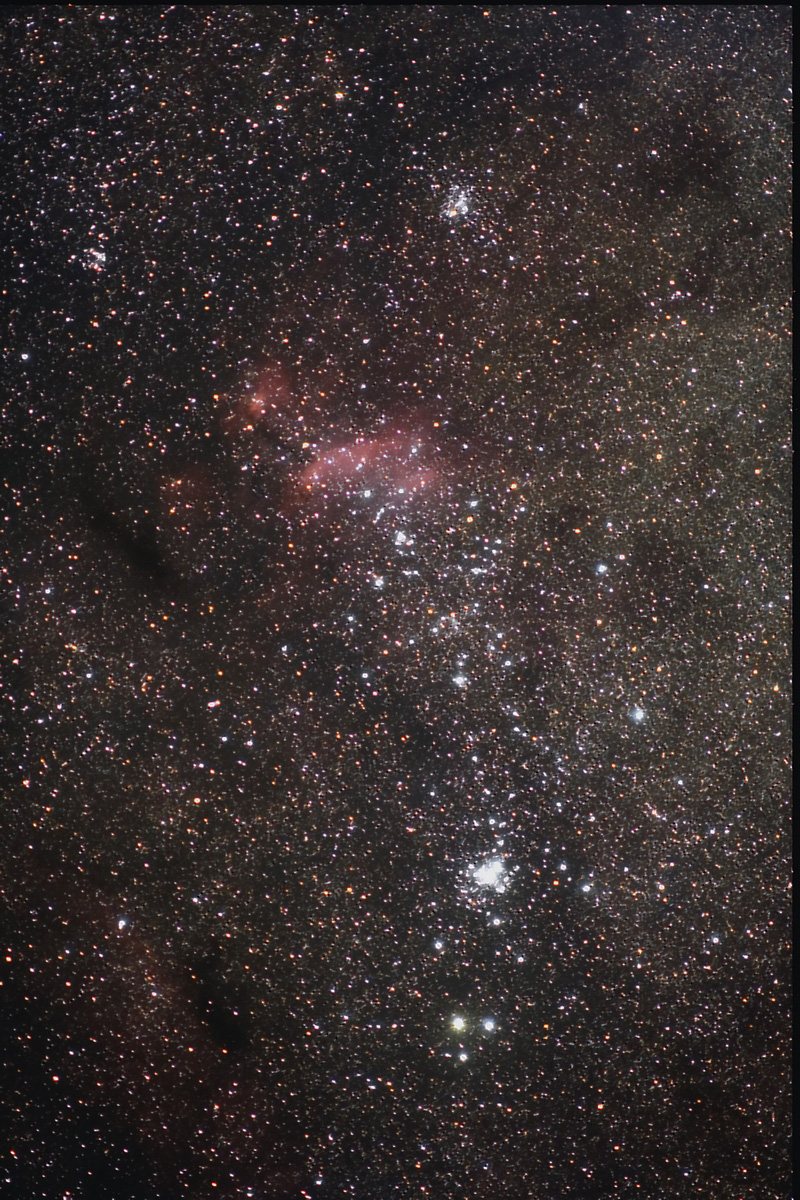There is such a thing as getting too close to an object. You know what this is?
Oh, c'mon. Don't tell me you couldn't see it's the Tarantula Nebula?
Yeah, well. The ESA/Hubble Tarantula Nebula picture shows the outskirts of the Tarantula Nebula, which is why it is basically impossible to recognize it. As for today's APOD, I also don't think it tells us the whole story:
And I don't know about you, but I have some problems spotting the uncanny resemblance of IC 4628 to a prawn...

Wikipedia has an interesting picture of IC 4628 which I think shows us more than the APOD:
At lower center right in the ESO image, you can see a blue-white star which I believe is HD 152723, which according to
Simbad is a blisteringly hot star of spectral class O6.5III. I believe it is this star that is responsible for ionizing the nebula, blowing away gas and dust in the region and creating a ridge somewhat similar to the one in NGC 3324:
If you look at the ESO image of IC 4628 again, you can see a bright "clump" at upper left that is clearly connected to IC 4628 through a dark dusty "sling". This is an obvious case of triggered star formation.
Anyway. This is my point. IC 4628 is part of a large region of fascinating objects, and showing just the nebula - let alone without any information about technical details and filters - is not wrong, but I strongly feel that this picture is just a part of a larger story that needs to be told!
First of all, IC 4628 is one end of a structure that Messier would have spotted if it had been a bit farther north, because comet-hunters without optical aid really need to look out! They could really mistake nebula IC 4628 and brilliant star cluster NGC 6231 for a comet. Appropriately, the nebula and cluster are known as the False Comet in the sky:

Yes, IC 4628 and NGC 6231 are almost certainly connected, or at least they are part of the same starforming area in Scorpius. Here is a great annotated overview of the larger region in Scorpius by Sergio Eguivar:
Another and more easily accessible version of the image is
here. Note that the image is almost 700 KB.
At top center in Sergio Eguivar's image you can see the Dark Tower, a cometary globule (or a "pillar"), blown by the strong winds of the the stars of NGC 6231. Gerald Rhemann has taken a brilliant picture of it:
The Dark Tower is a top right, and NGC 6231
is at bottom left. Credit: Gerald Rhemann.
The False Comet is part of constellation Scorpius:
Constellation Scorpius. Credit:
Jerry Lodriguss.
Bright orange Antares is above center in this image. Can you spot the False Comet below center?
And one final tidbit here. Many globular clusters of the Milky Way orbit the center of the galaxy in such a way that they periodically plunge right through our galaxy's disk. I once read that globular cluster NGC 6397 was thought to have plunged through the disk in the region of constellation Scorpius and caused the kind of local disarrangement and "choppy seas" that led to the formation of NGC 6231!
I've never seen the claim that NGC 6397 caused the formation of NGC 6231 confirmed anywhere, and I don't think astronomers believe in it. Still, I like the idea, and I think it's fun to imagine.
Ann
 IC 4628: The Prawn Nebula
IC 4628: The Prawn Nebula






